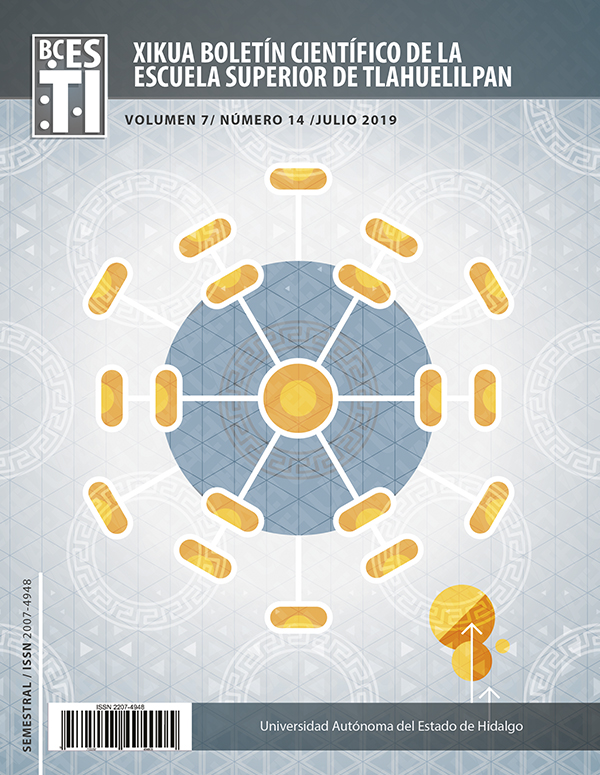El Diseño y construcción de un dispositivo mecatrónica para terapia ocupacional para niño
Resumen
En este trabajo se diseña y construye un sistema mecatrónico para apoyar a niños con alguna discapacidad motriz de la extremidad superior (brazo) enfocado a las terapias ocupacionales. Este dispositivo está encauzado a niños por lo que está construido de forma sencilla y atractiva para que siempre tenga interés el infante de realizar sus terapias, sin dejar a un lado que el equipo debe de cumplir el objetivo principal de rehabilitación. Se diseña un equipo para terapias ocupacionales debido a la falta de mecanismos que brinde ayuda al terapeuta en la realización de sus sesiones de rehabilitación y a la vez motive al paciente en este caso al niño a realizar la terapia. El diseño es realizado en un software CAD como es Solidworks y se construye con material suave y resistente para no dañar al infante. Además, se añade al dispositivo un juego de led para que le sea más atractivo e interesante al niño. Este equipo experimental de rehabilitación fue probado en un centro de rehabilitación de niños con problemas motrices y la respuesta de los infantes fue exitosa. Para la realización de este trabajo, en todo momento se recibió colaboración de terapeutas y del apoyo de las mamás de los niños de forma entusiasta.
Descargas
Citas
Bissolotti, L., Villafañe, J., Gaffurini, P., Orizio, C., Valdes, K., Negrini, S. (2016). Changes in skeletal muscle perfusion and spasticity in patients with poststroke hemiparesis treated by robotic assistance (Gloreha) of the hand. Journal of Physical Therapy Science. ISSN : 2187-5626.
Borboni, A., Mor, M. and Faglia, R. (2016). Gloreha—Hand Robotic Rehabilitation: Design, Mechanical Model, and Experiments. Journal of Dynamic Systems, Measurement, and Control. Vol. 138, Issue 11.
Brackenridge, J., Lynley, V., Sheila, L., Costi, J., Hobbs, D. (2016). A Review of Rehabilitation Devices to Promote Upper Limb Function Following Stroke. Neuroscience and Biomedical Engineering, Vol. 4, Num. 1, pp. 25-42(18). Bentham Science Publishers
Carmeli, E., Vatine, J., Peleg, S., Bartur, G., Elbo, E. (2009). Upper limb rehabilitation using augmented feedback: Impairment focused augmented feedback with HandTutor. Virtual Rehabilitation International Conference. DOI: 10.1109/ICVR.2009.5174258.
Chang, Ch., Lange, B., Zhang, M., Koenig, S., Requejo, P., Somboon, N. (2012). Towards pervasive physical rehabilitation using Microsoft Kinect. 6th International Conference on Pervasive Computing Technologies for Healthcare (PervasiveHealth) and Workshops.
Clark, L., Bryanta, A., Pua, Y., McCrory, P., Bennell, K., Hunt, M. (2010). Validity and reliability of the Nintendo Wii Balance Board for assessment of standing balance. Gait & Posture. Gait & Posture. ELSEVIER. Vol. 31, Issue 3, Pp 307-310
Connelly, L., Jia, Y., Toro, M., Stoykov, M., Kenyon, R., Kamper, D. (2010). A Pneumatic Glove and Immersive Virtual Reality Environment for Hand Rehabilitative Training After Stroke. IEEE Transactions on Neural Systems and Rehabilitation Engineering. Volume: 18 , Issue: 5. Pag. 551-559.
Coulter, J., Carter, H. (1946). How to Bring Benefits of Physical Medicine to Your Own Small Town. Physical Therapy, Vol. 26, Issue 2, March 1946, Pag. 75–77.
Gonzalo Dominguez M. (2014). Evaluabilidad de los programas del robot amadeo en la rehabilitación de la mano del hemipléjico. TOG (A Coruña). Vol. 11. Num. 20. ISSN 1885-527X.
Jakob, I., Kollreider, A. Germanotta, M., Benetti, F., Cruciani, A., Padua, L., Aprile, I. (2018). Robotic and Sensor Technology for Upper Limb Rehabilitation. Innovations Influencing Physical Medicine and Rehabilitation Innovations Influencing Physical Medicine and Rehabilitation. Vol. 10, Issue 9, Supplement 2, Pages S189-S197. PM&R. ELSEVIER.
Lange, B.; Koenig, S.; McConnell, E.,; Chang, Ch.; Juang, R.; Suma, E. (2012) Interactive game-based rehabilitation using the Microsoft Kinect. IEEE Virtual Reality Workshops (VRW). DOI: 10.1109/VR.2012.6180935.
Li, Z., Li, J., Guan, Y., Yi, K. (2009). Practice of Actual Project Driven Teaching Model on Software Engineering Major. International Conference on Information Engineering and Computer Science. ISBN: 978-1-4244-4994-1.
Lima, A., Ribeiro, I., Coimbra, L.,1 Dos Santos, M., De Andrade, E. (2006). Mecanoterapia e fortalecimento muscular: um embasamento seguro para um tratamento eficaz. Revista Saude.Com. Vol. 2. Issue 2. Pp. 143-152.
Peleg, S., Bartur, G., Elbo, E., Vatine, J. (2010). HandTutor enhanced hand rehabilitation after stroke — a pilot study. Physiotherapy Research International. https://doi.org/ 10.1002/pri.485
Phisiobasic. (2019) Mesa de Kanavel. [Online]. https://phisiobasic.com/producto/mesa-de-manos/ [Fecha de consulta: Abril, 2019].
Pilwon, H., Gwang, M., Soo-jin, L., Kyehan, R., Jung, K. (2012). Current hand exoskeleton technologies for rehabilitation and assistive engineering. International Journal of Precision Engineering and Manufacturing. Vol. 13, Issue 5, pp 807–824.
Popov, D., Gaponov, I., Jee-Hwan, R. (2017). Portable Exoskeleton Glove With Soft Structure for Hand Assistance in Activities of Daily Living. IEEE/ASME Transactions on Mechatronics. Vol. 22, Issue: 2. Pp. 865- 875. DOI: 10.1109/ TMECH. 2016.2641932.
Sarakoglou, I., Kousidou, S., Tsagarakis, N., and Caldwell, D. (2007). Exoskeleton-Based Exercisers for the Disabilities of the Upper Arm and Hand. Book Rehabilitation Robotics. ISBN 978-3-902613-04-2, pp.648. Itech Education and Publishing, Vienna, Austria.
TensMexico. (2019) Mesa de Kanavel. [Online]. http://www.tensmexico.com/downloads/11.MECANOTERAPIA.pdf [Fecha de consulta: Abril, 2019].
Young, W., Ferguson, S.,Brault, S., Craiga, C. (2011). Assessing and training standing balance in older adults: A novel approach using the ‘Nintendo Wii’ Balance Board. Gait & Posture. Gait & Posture. ELSEVIER. Vol. 33, Issue 2, Pp 303-305









